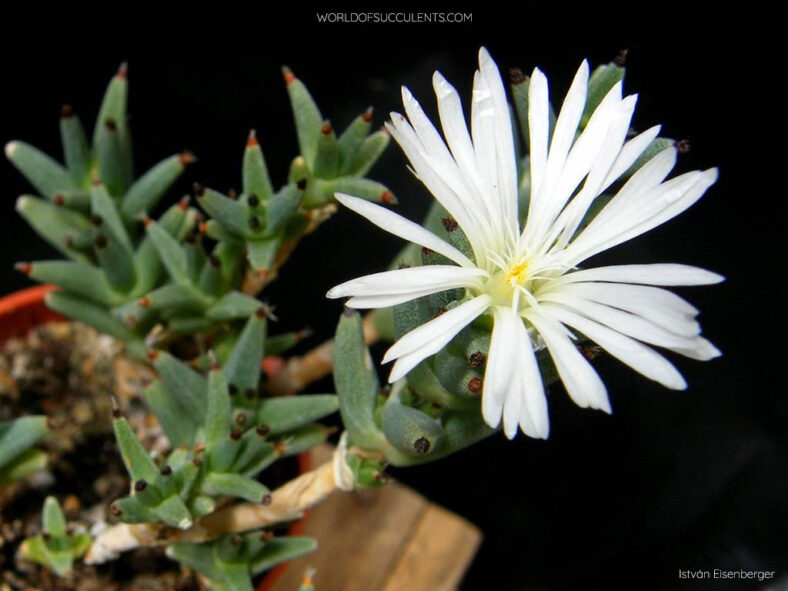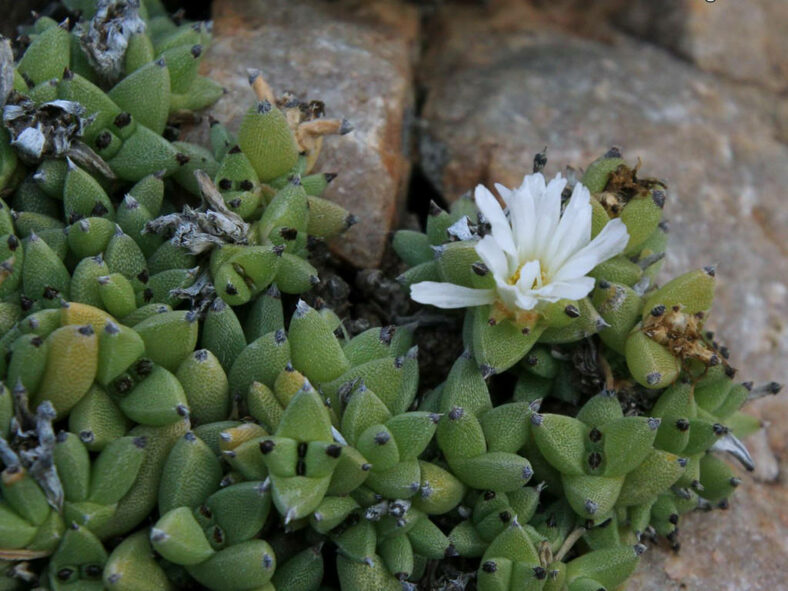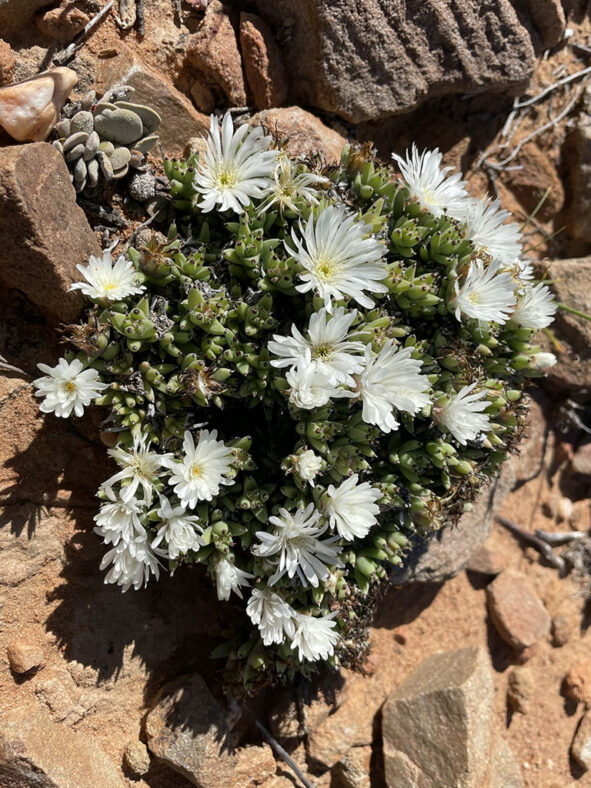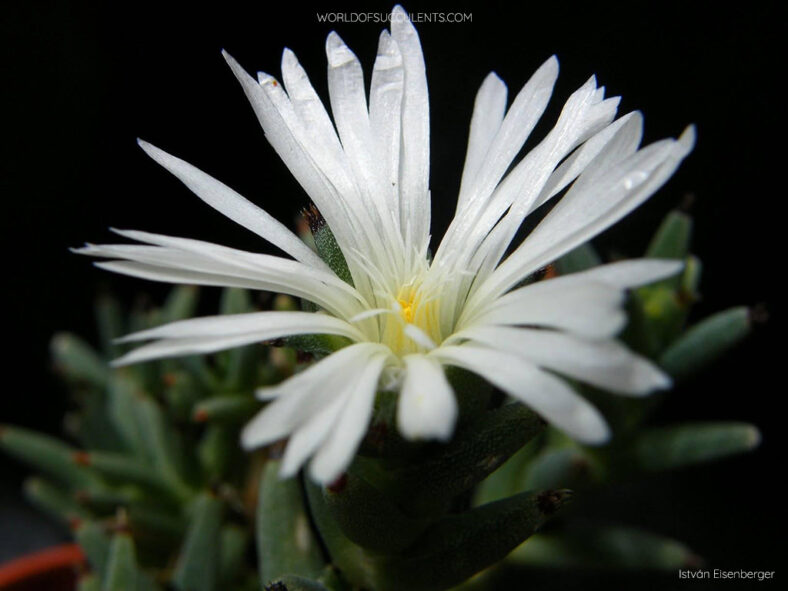Scientific Name
Trichodiadema mirabile (N.E.Br.) Schwantes
Common Name(s)
Black Crownfig, White Vygie
Synonym(s)
Mesembryanthemum mirabile, Trichodiadema mirabile var. mirabile
Scientific Classification
Family: Aizoaceae
Subfamily: Ruschioideae
Tribe: Ruschieae
Genus: Trichodiadema
Etymology
The specific epithet "mirabile (pronounced mih-RAB-ih-ley)" means "wonderful, glorious, miraculous" and refers to the look of the plant when in full bloom.
Origin
Trichodiadema mirabile is native to South Africa. It grows on stony slopes from Laingsburg in the Western Cape to Uitenhage (officially renamed Kariega) in the Eastern Cape province.
Description
Trichodiadema mirabile is a more spreading than erect succulent shrublet with densely white-hairy branches and fresh green leaves covered with tiny, pointed water cells and tipped with a cluster of bristles. It can grow up to 3.2 inches (8 cm) tall. The leaves are erect, subcylindrical, fused at the base, measuring up to 1 inch (2.5 cm) long and 0.25 inches (0.6 cm) wide. They take on an orange hue when stressed. The clusters of bristles or diadems, characteristic of the genus, are whitish, based upon a nearly black platform, and often inclined in unison, resembling a black spine.
The solitary white flowers appear from the leaf axils and stem tips on a small stalk from late spring to mid-summer. They can reach up to 1.6 inches (4 cm) in diameter. The fruits are 6-locular capsules.

How to Grow and Care for Trichodiadema mirabile
Light: Trichodiadema mirabile requires bright light but not too much direct sunlight. So, a windowsill that receives 4 to 5 hours of direct sunlight in the morning and partial shade in the afternoon will be a perfect spot for indoor growing.
Soil: The plant thrives in porous soil, allowing the water to drain away quickly. Therefore, use commercial soil for succulents or make your own well-draining mix.
Temperature: High temperatures are not a problem as long as there is plenty of fresh air, but this plant is not cold-hardy. It grows best in USDA Plant Hardiness Zones 9b to 11b, with average minimum winter temperatures ranging from 25 to 50 °F (-3.9 to 10 °C).
Watering: To keep your Trichodiadema mirabile healthy, it is most important to know when, how much, and how often to water it. During its dormant period, usually in winter, the plant requires little or no water. From spring to fall, water it thoroughly but allow the soil to dry between waterings.
Fertilizing: As long as you repot this plant every two years, it does not need fertilizer.
Repotting: Even if your plant can stay happy in the same pot for years, you can occasionally repot it to give it more space during the growing season. The best time to do this is at the beginning of the growing season.
Propagation: Dividing clumps is one simple way to propagate this plant. Another option is to start from seeds by sowing them in well-draining soil during spring. The best time to divide is late spring or early summer.
Learn more at How to Grow and Care for Mesembs.
Toxicity of Trichodiadema mirabile
Trichodiadema mirabile is considered non-toxic and safe around kids and pets.
Links
- Back to genus Trichodiadema
- Succupedia: Browse succulents by Scientific Name, Common Name, Genus, Family, USDA Hardiness Zone, Origin, or cacti by Genus
Photo Gallery
Click on a photo to see a larger version.


